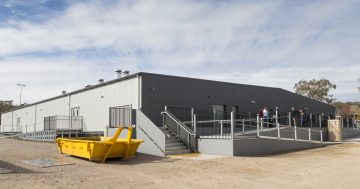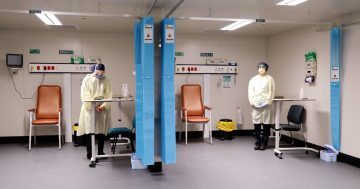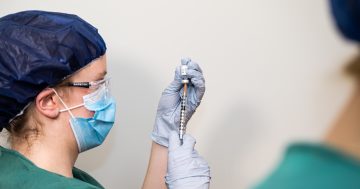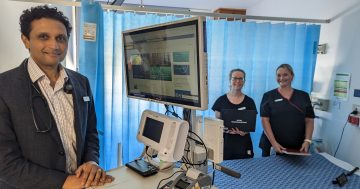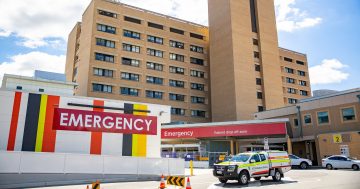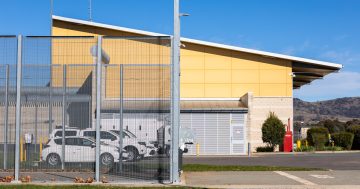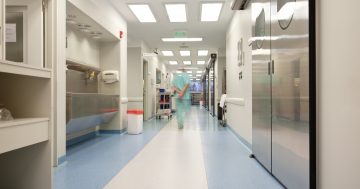
Canberra Health Services Deputy Chief Executive Dave Peffer outside the new Surge Centre on Garran Oval. Photos: Michelle Kroll.
The ACT’s $23 million COVID-19 insurance policy is ready for the ‘go’ button to be pushed after a fast-tracked build and fit-out.
The temporary 50-bed COVID-19 Surge Centre sprang up on Garran Oval in just 37 days and is poised to be activated if the Canberra Hospital is overwhelmed by an outbreak during the winter when the flu season is usually in full swing.
It’s the bespoke medical facility that the government doesn’t want to have to use.
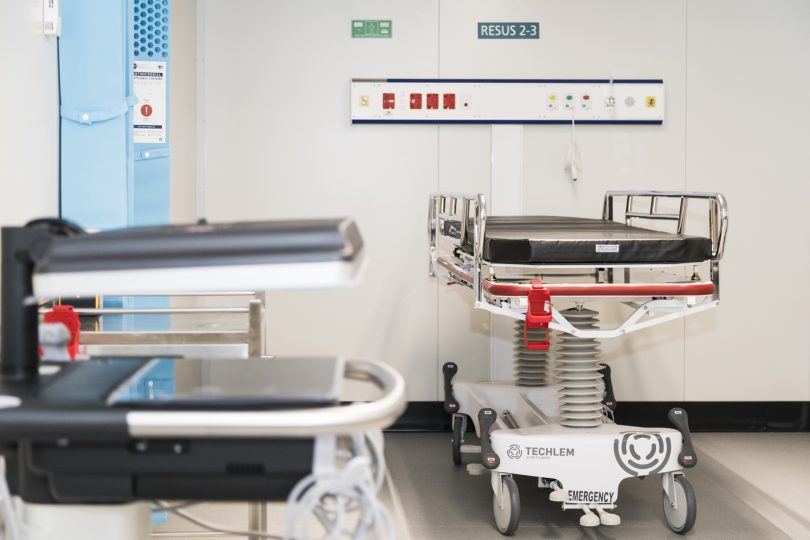
The resuscitation area.
”No one buys insurance hoping they’ll crash their car, they have it in case and this is part of our in case plan for the Territory,” said Deputy Chief Executive of Canberra Health Services Dave Peffer yesterday (21 May) at a walk-through of the new facility.
The government allocated $23 million to contract local health services outfit Aspen Medical to deliver and run the facility, which was designed in partnership with the World Health Organisation.
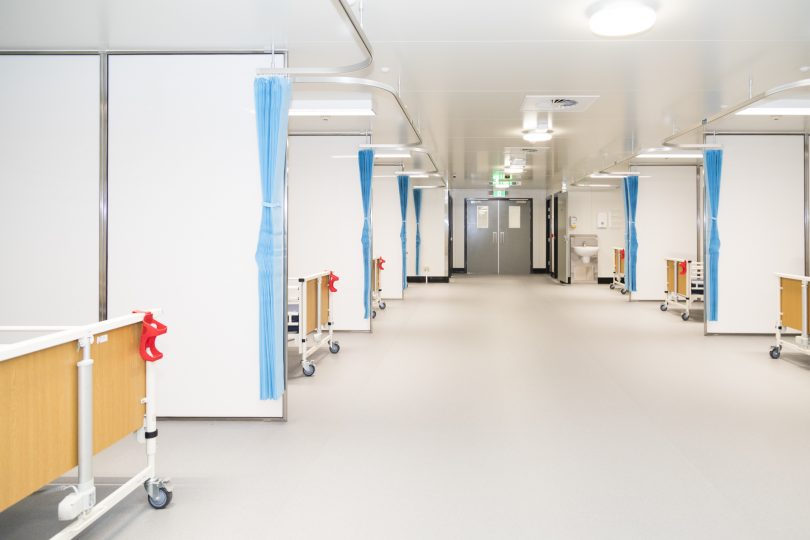
One of the pods.
But that breaks down into $10.5 million for the build, $3.5 million for equipment and supplies, and $9 million for staffing which may not be spent if the ACT continues to not have any cases, as was the situation yesterday.
It is now a piece of mobile medical infrastructure owned by the Territory.
”The facility has been designed and built in such a way that it can be demobilised at the appropriate time and stored in 20-foot shipping containers,” Mr Peffer said. “It has a bar code system so it can be rapidly redeployed to a location.”
It could also be sold if the government wanted to.
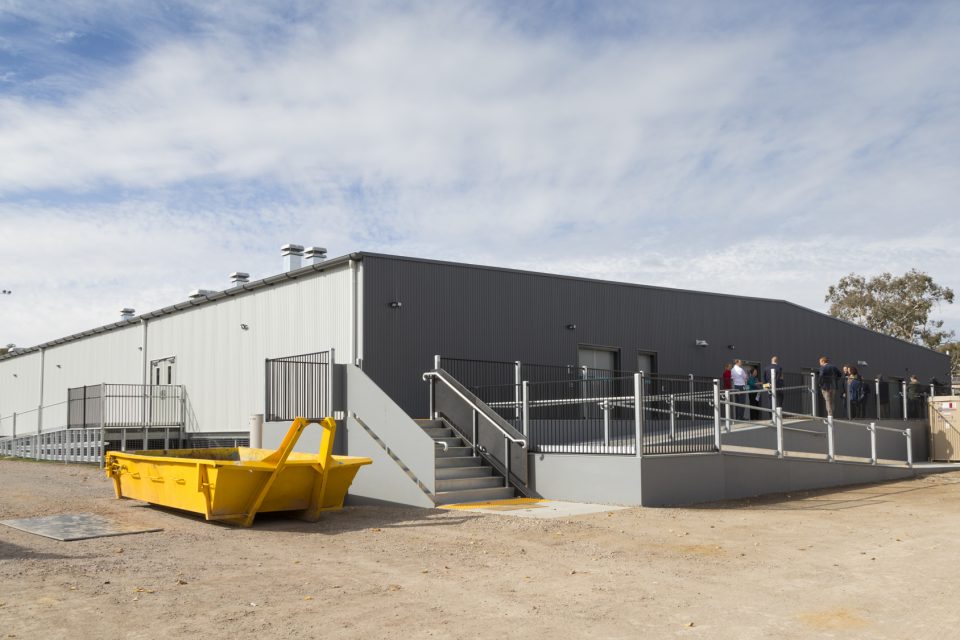
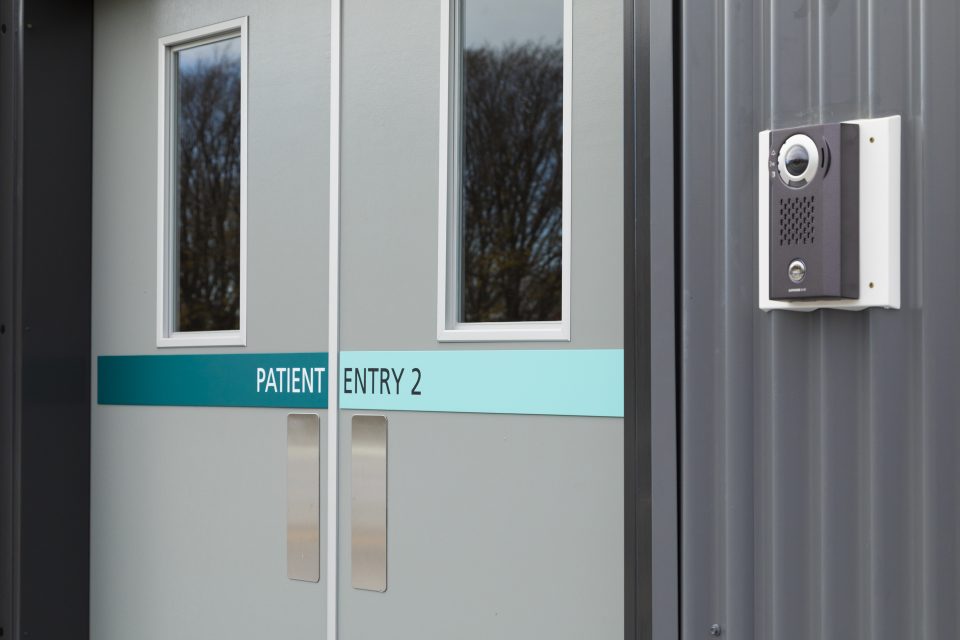

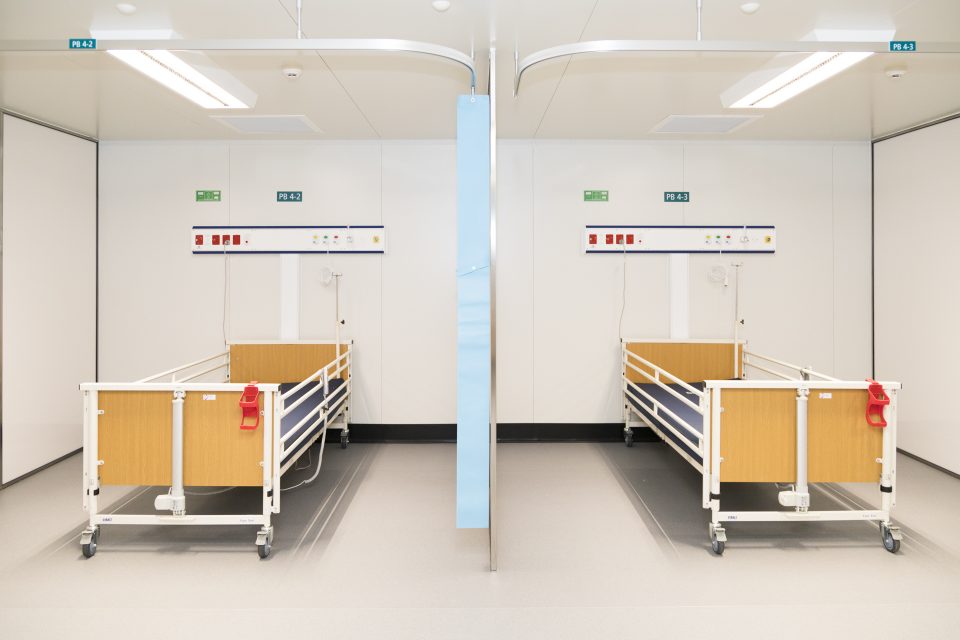


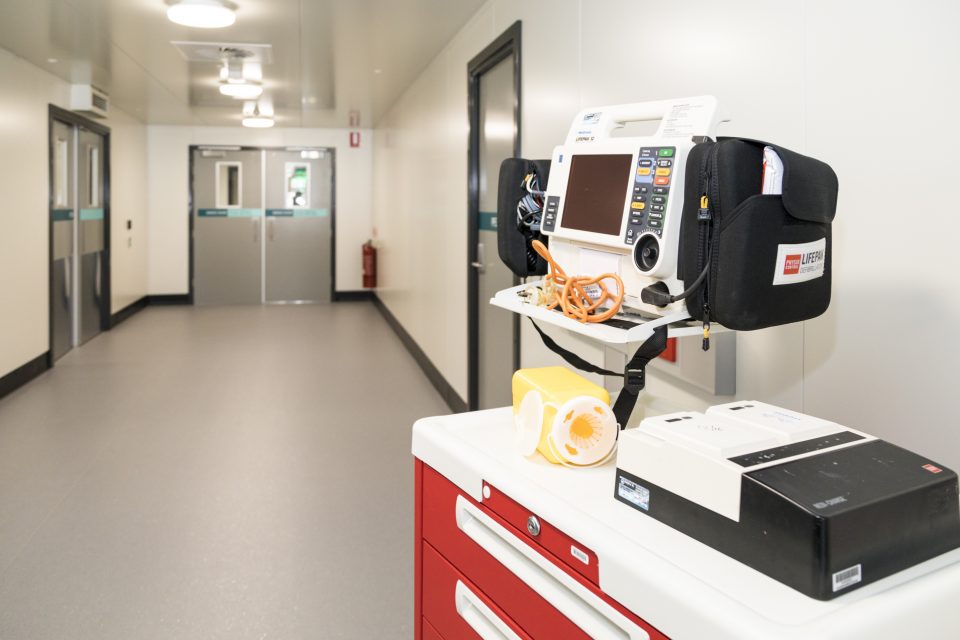

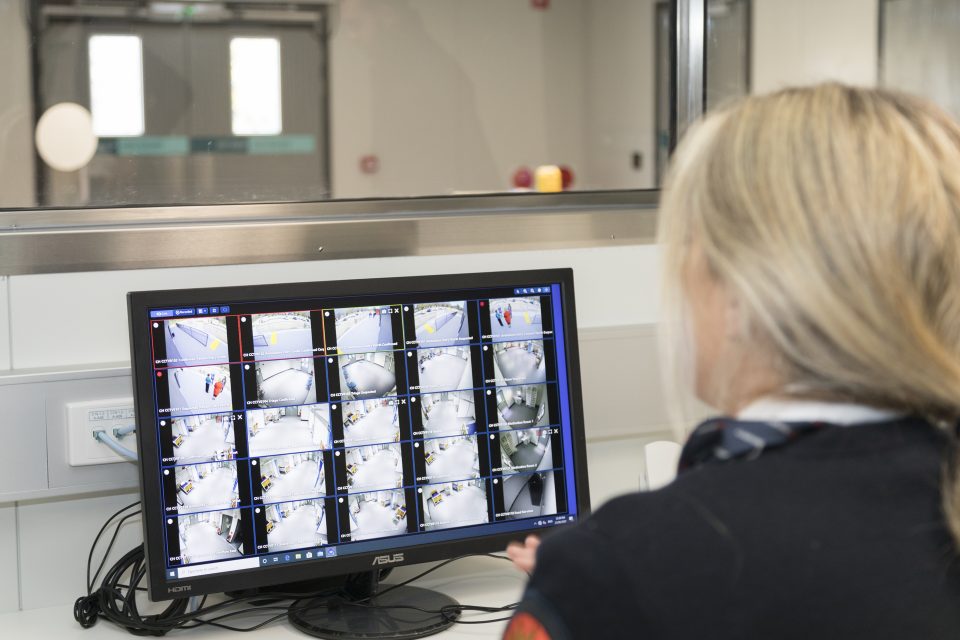
Divided into two sections for suspect-COVID and COVID-positive patients and separated by a ”green zone” corridor, the secured centre is designed to scale up as required to meet demand as and if it arises.
That will occur if Canberra’s hospitals cannot cope with the number of COVID-19 cases, but the surge centre will still take three weeks to come online.
It uses a multiple pods system that can be activated one after the other or all at the same time.
Within each side of the surge centre are triage areas, PPE donning and doffing areas, resuscitation beds, general beds, safe medicine dispensing units and toilets.
Refrigeration panelling has been used to divide spaces because it withstands constant abrasive chemical cleaning, critical when dealing with a disease such as COVID-19. The air is also filtered and expelled.
Some of the fixtures such as the medicine dispensing units were manufactured locally.
A security room with surveillance screens will monitor the facility.
Outside is an ambulance reception area, while those who may self-present will be screened at a nearby carpark.
While having a 50-bed unit sited so near the main campus might be tempting, it remains a dedicated facility that will only be used for treating COVID-19 patients.
Mr Peffer said there were no plans to use it for pandemic training exercises but a range of teams across CHS were looking at opportunities for the facility and where it could be deployed in future use.
The government chose the Garran site due to its proximity to the Canberra Hospital campus facilities, including the Intensive Care Unit, Emergency Department and Pathology.












